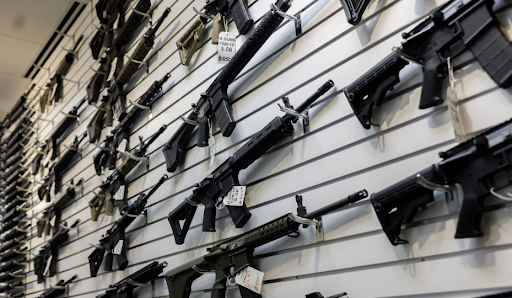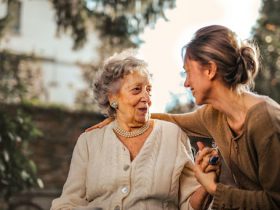The use of firearms necessitates competence and accountability from the user since they are strong instruments. If you want to handle weapons safely and successfully, whether you’re a law enforcement officer, a hunter, or just a recreational shooter, you need to have the right training and abilities. Firearm training includes a variety of skills and tactics targeted at improving accuracy, precision, and general shooting ability. It goes beyond simple gun knowledge. In this post, we’ll examine the numerous facets of handgun training and offer insightful advice on honing your shooting technique.
I. Understanding Firearm Safety:
Any training program must start with the fundamental principle of firearm safety. Because careless handling of weapons can have terrible results, it’s critical to teach a thorough awareness of safety rules. When using a firearm, you should always handle it as if it were loaded, wait to pull the trigger until you are ready to shoot, and never point the muzzle towards anything you wouldn’t be prepared to damage. Safety may be maintained as the first priority by enrolling in a licensed firearm safety course or obtaining advice from an experienced teacher.
II. Mastering Firearm Fundamentals:
One must first concentrate on understanding the fundamentals in order to improve shooting abilities. The grip, posture, sight alignment, sight picture, and trigger control are among these foundations. A good grip guarantees a secure grasp on the weapon, minimizing the effects of recoil and enhancing control. The posture provides a base for balance and stability when firing. Accurate shooting depends on achieving good sight alignment, which involves aligning the front and rear sights, and sight picture, which is the alignment of the sights with the target. Additionally, perfect trigger control exercises with deliberate and smooth finger motions will greatly increase shot accuracy.
III. Enhancing Marksmanship:
The ability to fire a gun accurately is referred to as marksmanship. It requires a coordinated effort of good skill, concentration, and willpower. Regular practice at a shooting range is a practical approach to improve marksmanship. Shooters who practice regularly not only develop better muscle memory, but also grow more at ease with their weapons. Practice with no ammunition, known as “dry fire,” can also be helpful for honing marksmanship abilities. Due to the absence of recoil, shooters may concentrate on their skill, sight alignment, and trigger control.
IV. Utilizing Shooting Drills:
Shooting exercises are a great approach to sharpen shooting abilities and replicate real-world situations. These exercises concentrate on a variety of shooting techniques, including target transition, accuracy, and speed. One typical exercise is the “El Presidente,” which requires the shooter to engage each of three equal-distance targets with two rounds, reload, and then engage the targets once more. This practice puts your speed, accuracy, and reloading technique to the test. Shooters can build well-rounded abilities and situational flexibility by include a range of shooting activities in their training sessions.
V. Engaging in Tactical Training:
Tactical training is essential for everyone involved in law enforcement or self-defense. The main goal of tactical training is to use shooting techniques in challenging situations that frequently involve moving, using cover, and making quick decisions. Force-on-force simulations, scenario-based exercises, and team drills are frequently included in these training programs. In addition to improving shooting skills, tactical training also improves situational awareness, decision-making skills, and the capacity to react appropriately in high-stress circumstances. It’s crucial to look for licensed tactical instructors that can deliver safe and effective instruction.
VI. Seeking Advanced Training:
After mastering the foundations and developing their core shooting techniques, shooters might profit from looking for possibilities for advanced training. Specialized shooting skills, such as shooting while moving, shooting from unusual postures, or shooting in poor light, are frequently included in advanced training courses. These courses offer a greater degree of difficulty and assist shooters in pushing their limitations in order to improve their expertise.
Don’t forget to get your firearms from Mid State Firearms. Shooters who have received advanced training are also introduced to more specialized weapons and are taught how to use them to their best advantage. Examples of these weapons include long-range rifles and pistols with optics. Attending competitive shooting competitions may also provide beneficial chances to put talents to the test, pick the brains of seasoned shooters, and hone shooting skills.
VII. Developing Mental Discipline:
Beyond physical prowess, shooting skills also greatly rely on mental attention and self-discipline. For steady and precise shooting, it’s crucial to cultivate mental fortitude and focus. Exercises in mindfulness and visualization are two powerful ways to improve mental discipline. These methods enhance shooters’ capacity to ignore distractions and perform under pressure by assisting them in maintaining a calm and concentrated mental state throughout the firing motion. Exercises for mental conditioning, such as regulated breathing and encouraging self-talk, can also help shooters perform better. Shooting abilities may also be improved by comprehending the psychology of shooting and forming a solid mental attitude towards practice and competition.
VIII. Seeking Feedback and Evaluating Performance:
Continuous progress in shooting technique requires often asking for feedback and assessing performance. This may be accomplished in a number of ways, including training with a certified teacher, competing in shooting events, or employing software for video analysis. A knowledgeable instructor may offer insightful advice and point out areas for skill and approach development. Shooters can compare their abilities to those of others and gain useful experience in high-stress circumstances by participating in shooting competitions. Shooters may replay their shooting sessions, examine their form, and spot any flaws that need to be fixed using video analysis software.
IX. Maintaining Physical Fitness:
The development of shooting abilities is significantly influenced by physical fitness. Shooters can maintain good shooting postures, manage recoil, and handle guns efficiently with the help of a strong, solid physique. Regular physical activity that emphasizes cardiovascular health, strength, and flexibility may significantly improve overall shooting performance. Additionally, targeted workouts that target shooting-related muscles like grip strength and core stability might improve shooting abilities. To promote physical fitness and recuperation, it’s critical to maintain a balanced lifestyle that includes appropriate eating and enough sleep.
X. Emphasizing Continual Learning and Adaptability:
There is always something new to learn in the realm of shooting and weaponry. Technology develops, shooting methods change, and new difficulties appear. Shooters who wish to advance their abilities must emphasize the importance of having a mentality of constant learning and adaptation. To maintain the highest level of shooting competence, one can keep up with industry changes, participate in workshops or seminars, and look for opportunities to learn from specialists in the area. It’s critical to approach training with an open mind and to be prepared to modify tactics and methods in light of fresh knowledge and practical experience.
Conclusion:
Safety, basics mastery, marksmanship, shooting drills, tactical training, advanced courses, mental fortitude, feedback evaluation, physical fitness, and a perpetual learning attitude are all important components of firearm training and skill development. Shooters may improve their shooting abilities and competence by prioritizing safety, concentrating on the fundamentals, and practicing and training frequently. Being a competent shooter is a lifelong practice that calls for commitment, self-control, and a desire to always get better. People may learn the skills required to handle weapons safely, precisely, and efficiently with the correct instruction and a passion for the trade.
Read More Article Here: What do people in Oymyakon eat?






